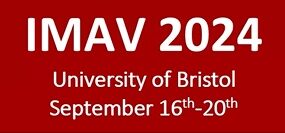Bristol is a small and vibrant city in the south west of England, located about 190 km west of London. It dates back to the 12th century and was a major river port, with the old harbour at the centre of the city on the River Avon (which flows into the Bristol Channel in the Atlantic Ocean, where the modern sea port is located).
Amongst its many attractions, making it a popular city to live in, Bristol is known for its maritime history, arts, music and culture, creative industries and engineering. Every summer it hosts a Harbour Festival and also the International Balloon Fiesta (the city is home to what is considered the world’s largest hot-air balloon manufacturer), and there are plenty other attractions across the year (see, for example, https://www.timeout.com/bristol). There are numerous museums and other places of interest, including the oldest continuously working theatre in the English-speaking world – the Bristol Old Vic. The Conference drinks reception on Wed. 12th June will be at one of the many harbourside venues (Revolución de Cuba).
Check events happening in and around Bristol during the week of the conference on eventbrite or on the visitbristol page.

Bristol’s role in engineering innovation is epitomized by the activities of Isambard Kingdom Brunel who in the 19th century designed steamships (you can visit the SS Great Britain – the world’s first iron-hulled, propeller-driven ship to cross the Atlantic – at the excellent SS Great Britain museum), railway, tunnels and bridges. Bristol’s famous landmark – the Clifton Suspension Bridge – was designed by Brunel. He was also responsible for the construction of the railway linking Bristol to London as well as the original part of Temple Meads Station (where you will arrive if you come to Bristol by train).

Bristol became a major centre for aerospace engineering after Sir George White started the British & Colonial Aeroplane Company Limited in north Bristol (Filton) in 1910 – which, by 1939, was the world’s largest single aircraft manufacturing site. Its portfolio of products included many fixed-wing aeroplanes, aircraft engines, helicopters, missiles and even cars. In 1977 it became part of the nationalised British Aerospace company, later privatised to form BAE Systems. The legacy of over 100 years of aviation in Filton – where the British Aerospace contribution to the design and manufacture of Concorde and its engines took place – can be seen at the Aerospace Bristol museum.
An enormous amount of information on Bristol – travel, accommodation, places to see, where to eat, walking tours, etc. – can be found at Bristol’s official tourist information website.
If you have time to also explore the area around Bristol more widely (e.g. Bath is only about 20 km away), information is available at the Go South West website.


